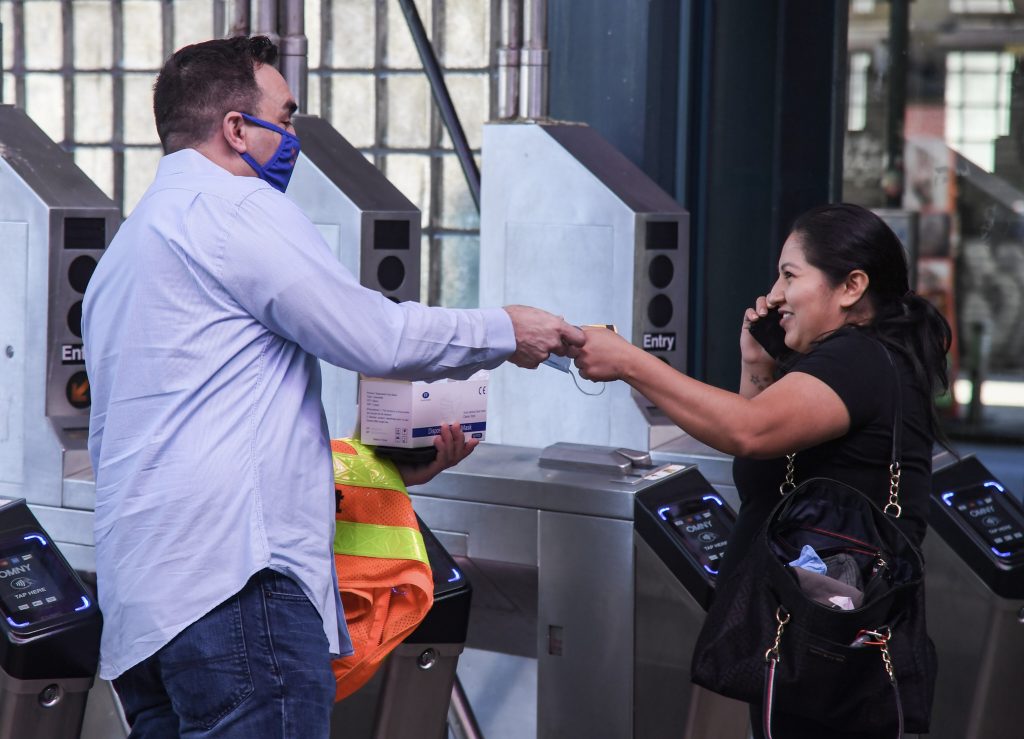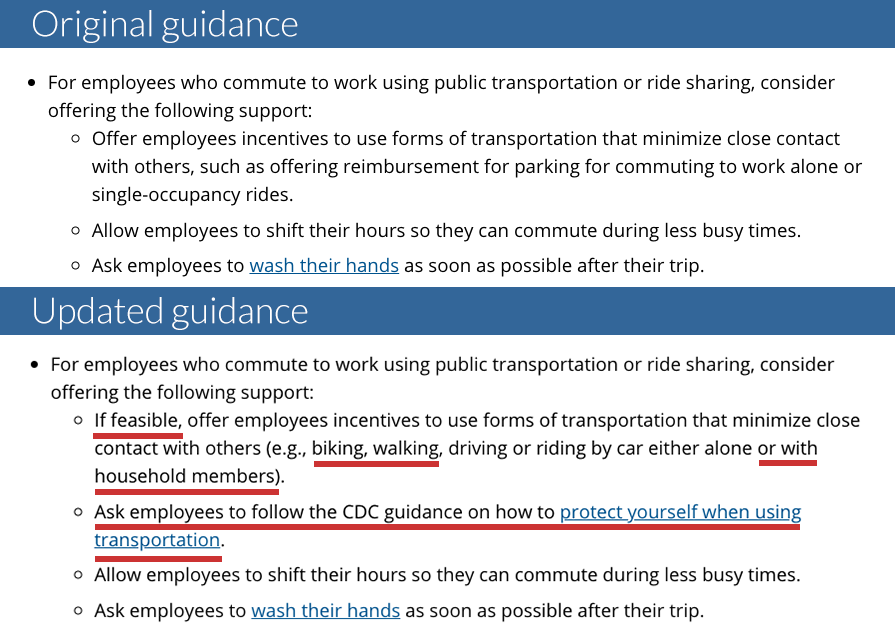CDC quietly revises their guidance to encourage people to use transit safely
Two weekends ago the Centers for Disease Control and Prevention quietly revised their guidance for using public transportation after an outpouring of criticism from Transportation for America, NACTO, TransitCenter, the American Public Transportation Association, and others that the CDC was contradicting years of their own guidance that encouraging more driving incurs massive public health costs in pollution, respiratory illnesses, obesity, and preventable traffic deaths.

We will eventually get more of the country back to work as the pandemic subsides (in some places, even as it likely springs back in others.) Some parts of the country are already reopening in phases. But when we do start things up again, we will need public transportation to continue moving millions of people. And as we have throughout the pandemic, the country will look to the CDC for advice.
Yet, when the CDC first issued their guidance for public transit their lone, astonishing recommendation for employers of people who commute using public transportation was to offer those employees incentives encouraging them to drive and park, and allow flexible hours to commute when it’s less busy. Needless to say, we were aghast. As Beth Osborne, T4America director, told E&E last week in a story about the updated guidance, “I find responding to this guidance so frustrating and befuddling, I don’t know where to start.”
As former NYC DOT head Janette Sadik-Khan chimed in along those same lines, “The CDC telling workers to drive alone assumes that everyone owns a car and that cities can handle the traffic. This is a fever dream. There’s no reopening cities w/o reopening transit. Ruling it out doesn’t make it safer.”
Scores of public letters were written to CDC. And then rather quietly two weekends ago, the CDC made some notable and encouraging changes to that guidance.
What changed?
They have added “if feasible” to that first part, as well as expanding upon the kinds of transportation that help avoid close contact like biking, walking, or riding with other household members. But much more importantly, rather than just urging transit riders to start driving—which is not possible for millions of Americans, would destroy our cities, and (by CDC’s own admission) would make air pollution worse and traffic fatalities increase—they direct employees to read other valuable guidance CDC has produced on protecting yourself on transportation. That guidance could also use some improvements but it’s at least they are pointing to practical advice for helping riders use transit and stay safe doing so as the country reopens.

CDC still needs to go further on transportation, such as encouraging drivers to clean their cars to make carpooling safe, providing more (new, quick, flexible) facilities for bike parking, petitioning cities to create new safe space for biking/walking, but this was an important recognition by CDC of the ways that their previous guidance actually contradicted their own incredibly valuable, decades-long work to help address health by encouraging more walking, more biking, and more transit use in metro areas across the country.
MTA's emphasis on universal mask-wearing comports with evidence emerging from Seoul and other cities where millions of people ride transit each day and COVID transmission remains low. https://t.co/t5mtV7Xgfi
— TransitCenter (@TransitCenter) June 2, 2020
As TransitCenter has been documenting, other affected countries (Japan, South Korea, and even France.) have restored all or part of their transit service and have seen passenger counts return to pre-pandemic levels, all without an outbreak. It’s clearly possible to bring transit back safely, and CDC should be the ones helping to make this possible.
Our cities won’t function without it.
As the struggle in New York is already demonstrating—the mayor with social distancing vs. the MTA with universal mask-wearing—even with better guidance from the CDC (which they should still improve), it can still be a battle because of jurisdictional issues endemic to transit, which is rarely controlled by one city or locality. These changes are a good step but the CDC should be leading the charge with good recommendations that also weigh the relative short- and long-term risks of safely reopening transit systems and encouraging riders to return vs. millions more cars on the road.




















Pingback: CDC quietly revises their guidance to encourage people to use transit safely | Public Transit Blog
Pingback: What lockdown? Traffic returns, and so do carbon emissions – Radio Free
Pingback: What lockdown? Traffic returns, and so do carbon emissions - EnviroLink Network
Pingback: What lockdown? Traffic returns, and so do carbon emissions – My Blog
Pingback: What lockdown? Traffic returns, and so do carbon emissions | Grist
Pingback: What lockdown? Traffic returns, and so do carbon emissions | Philanthropy Media Network
Pingback: Mobility Hub Newsletter: June 18, 2020 - Shared-Use Mobility Center